Into the limelight

The use of lime in building can be traced back throughout the last 10,000 years. It has only been in the last century, as the drive towards mass production took hold that lime’s usage in new build fell away. However, as Hugh Dorrian, Member of the Main Committee of the recently launched Building Limes Forum Ireland reveals, lime is regaining ground as a key material not only in conservation projects, but in new build, as consumers start to demand buildings that are healthy, environmentally friendly and durable.
The Building Limes Forum Ireland (BLFI) was formally launched in an exciting new initiative on the 24th November at the Irish Architectural Archive on Merrion Square, Dublin. The Launch brought together homeowners, building professionals and many of the building trades to jointly promote the use of lime in both new and old buildings. The BLFI acts as a branch of the International Building Limes Forum, which has successfully spearheaded the revival of interest in lime in buildings worldwide for the last 13 years.
The BLFI is a charitable organisation with no commercial ties and, through the organisation of international conferences/workshops (Bergen, Norway hosted the last international conference this September and Ireland hosted the 2002 conference in Kilkenny), research papers and regular national conferences and workshops, it will encourage the open exchange of information and ideas on the use of lime in both old and new buildings. The BLFI also promotes the use of lime through the publication of a regular journal, practical research and development through field studies, trials, monitoring and analysis and through it’s encouragement of appropriate industrial and craft skills and techniques.
This new development in the building industry has arisen from the continued re-emergence of lime as an essential ingredient in the careful restoration and conservation of our built heritage. Lime has been used in almost all pre-1900 buildings in Ireland and their successful preservation depends on its re-use. Aside from its use in historic buildings, evidence of the structural, aesthetic and environmental properties of lime has seen a burgeoning interest in its use in new buildings.
So, What is building lime and why is it important?
Building lime, as we know it today, is one of a range of materials that have been derived from a manufacturing process whereby limestone is heated in a kiln and slaked with water to form a putty or powder. The resulting material can be used as a binder in almost all elements of building, from foundations through to roofing. The physical and chemical characteristics of lime can vary greatly from limestone to limestone and from kiln to kiln and consequently there is sometimes ambiguity with lime but with education (and membership of the BLFI) clarity is within reach.
In general terms, Limes are classified by the way they set. Air limes set with the re-absorption of carbon dioxide, a component of air, the best of which is available in Ireland as Lime Putty. Air Limes tend to be very ‘fatty’, are highly workable and set relatively slowly. Alternatively, Hydraulic Limes, and in particular Naturally Hydraulic Limes, (NHLs) set by the addition of water. This ‘chemical’ set gives early strength build-up, after which the lime continues to build strength through carbonation. This initial hydraulic set is a property exhibited by limes that contain active clay impurities. These clay components, a combination of silicates and aluminates, can vary from rock to rock. Hydraulic Limes not only have this extra power of setting, but also are usually stronger than Air lime/Lime Putty and we now use the classifications of NHL2, NHL3.5 and NHL5 in an attempt to standardise by strength categories.
Lime is used worldwide where limestone is available and has been used as a building material for at least 10,000 years. Earliest examples of building lime can be found in Turkey and throughout the Middle East where highly worked, polished surfaces were and continue to be commonplace. Of course, during this long history lime was extensively used to build new buildings and was never just a material for the repair of old. It is somewhat ironic that lime is now sometimes considered a new material while its alternatives are with us for such a relatively short time.
The introduction of cement in the middle of the 19th century led to the decline in the use of lime, culminating in its virtual disappearance by the mid 20th century. Emerging evidence in the 1970s of the damage caused to historic buildings by the use of cement mortars and modern plasters has led to a revival in the use of lime over the past 20 years, not only for conservation but also for new build.
So why is Lime important? When it is used correctly, lime is simply the best and most versatile binder in the world. There are several reasons for this.
New and old building technologies differ. Solid wall construction differs greatly to the, now common, cavity wall in terms of vapour transfer, insulation, movement and stresses.

Lime Plaster used to restore a building to it's original splendour
Lime’s benefits in terms of ‘breathability’—high porosity; high permeability—is also crucial. Most gypsum and cementitious plasters and mortars are not suitable for solid masonry construction. Gypsum deteriorates quickly in the presence of moisture and cementitous plasters and mortars are excessively dense and brittle to allow free evaporation of moisture. The presence of such impermeable materials will capture moisture within the building structure leading to a reduction in insulation and an accelerated deterioration of the host masonry. Lime can help to disperse condensation, reduce rot and contribute to a healthy living environment.
The elastic, flexible nature of many limes can reduce or even eliminate the necessity for expansion joints. The flexibility of lime also plays a large part in minimising shrinkage and cracking.
Lime possesses a great resistance to weather. The wide variety of limes currently available in Ireland gives the user the freedom to choose appropriate material even in the most hostile of environments. This wide variety also allows lime to be used in a myriad of building applications; such as rendering, plastering, foundations, floor slabs, mortars for block, brick and pointing, grouting, washes, paints and a whole range of varied uses.
The compatibility and aesthetic suitability of lime ensures that a variety of strengths and colours are available to suit almost all host masonry from the most friable of mudstones and slob brick to the strongest granites. Lime’s relatively slow build up of strength facilitates building movement. It should also be noted that when used carefully, lime is exceptionally durable.
Due to its Low alumina content, lime is also less susceptible to attack by salts.
Indeed, its resistance to salts is another strong advantage over competing materials—no gypsum or cement make sulphate attack and alkali-silica reactions impossible. Lime boasts excellent performance even in marine environments. It is also resistant to bacteria & vegetable growth, as its alkilinity inhibits growth.
Purity is another benefit in Ireland , where we have a wide selection of pure limes with no additives. There is no need for blending – no need for cement, plasticisers, water retainers or waterproofers. However some lime mixes may benefit from the addition of a pozzolan.
Free-lime content gives excellent workability, and good workability greatly assists good workmanship. Free-lime content also gives the mortar self-healing properties, an autogenous healing mechanism. Furthermore, many Limes can be re-worked, reducing waste on site and facilitating tight schedules.
These waste reductions also extend into broader recycling benefits, as building materials used along with many building limes can be recovered and re-used.

A new build Lime Application in Co. Cork
Another environmental benefit is that lime, to varying degrees, re-absorbs CO2 during carbonation of the free lime. The use of Lime also adheres to the many conservation principles including reversibility, repairing like with like and careful minimal intervention.
Lime allows buildings to breathe, allowing increased permeability, insulation value and comfort; it is relatively flexible and forgiving on large elevations. It provides excellent adhesion and, in the right hands, can be worked to a fine finish that has excellent durability (think of our 900-year-old round towers). Lime also has other benefits that appeal to modern society. Its use benefits the environment by cleaning the air of carbon dioxide during curing and, of course, it looks wonderful. Almost all the buildings we are proud of as a nation derive a large part of their aesthetic appeal from lime. Where would Georgian Dublin be without lime, our castles and cathedrals, our beautiful country cottages, our grand architectural masterpieces and our humble stonewalls? The future is certainly bright for lime.
Membership of the BLFI is open to all. Newcomers to the world of conservation, restoration and sustainable building are particularly welcome as the informal network of contacts, experience and expertise can be invaluable.
To apply for membership of the Building Limes Forum Ireland contact the Forum through www.buildinglimesforumireland.com or e-mail This email address is being protected from spambots. You need JavaScript enabled to view it.
- Articles
- Sustainable Building Technology
- Into the Limelight
- lime
- conservation
- building limes forum ireland
- hugh dorrian
- blfi
- limestone
- construction
Related items
-
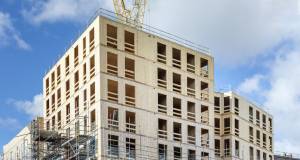 Towards greener homes — the role of green finance
Towards greener homes — the role of green finance -
 Quinn Building Products rebrands as Mannok
Quinn Building Products rebrands as Mannok -
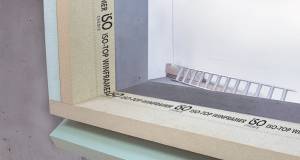 Iso Chemie Winframer gets BBA approval
Iso Chemie Winframer gets BBA approval -
 New digital construction platform launches
New digital construction platform launches -
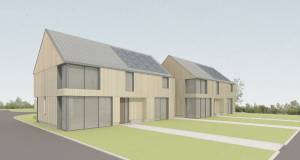 New Leeds developer goes passive
New Leeds developer goes passive -
 Ecological brings Lime Green plasters to Ireland
Ecological brings Lime Green plasters to Ireland -
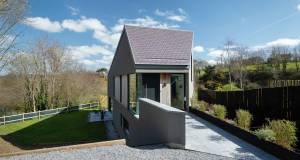 Stunning Cork passive house heads list of Isover award winners
Stunning Cork passive house heads list of Isover award winners -
 'Achieving NZEB' event in Cork this Thursday
'Achieving NZEB' event in Cork this Thursday -
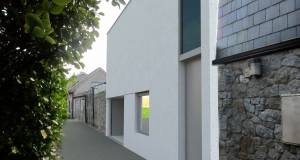 New property finance platform offers chance to invest in Dublin passive house
New property finance platform offers chance to invest in Dublin passive house -
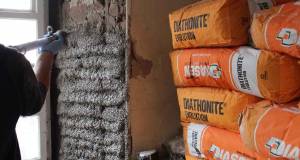 Diasen thermal lime plaster features on RTE renovation
Diasen thermal lime plaster features on RTE renovation -
 Passive House Plus launches sustainable building web directory
Passive House Plus launches sustainable building web directory -
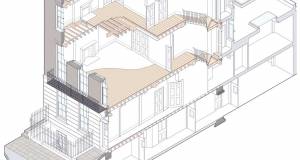 Historic London house gets near passive transformation
Historic London house gets near passive transformation

